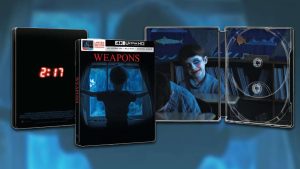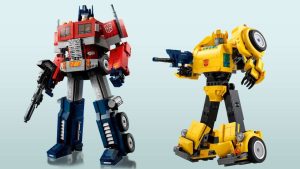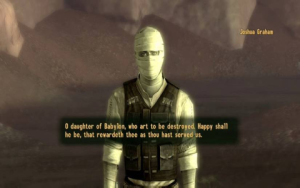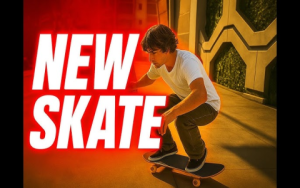Skating Games Are Mounting A Comeback But Are They Here To Stay?
Maybe you’ve noticed, but everywhere you look now, skating is back.
Though skateboarding games once dominated the gaming scene in the 2000s, the well appeared to all but dry up as the ambitions of the games industry evolved through the decades. Recently, however, there’s been a resurgence of skating games, and an audience made up of both oldheads and fresh-faced players alike has been showing up for them. It feels safe to say there’s still an appetite for these kinds of titles. With the early-access release of EA’s Skate–a revival of a series that once took up a lot of space in this industry–as well as the acclaimed releases of the Tony Hawk’s Pro Skater remakes, the once-dying genre seems primed for a comeback.
I first clocked this resurgence a while ago while playing an entirely different kind of skate game: a remarkably chill longboarding game called Driftwood. In Driftwood, you take on the role of a pretty cool sloth who carves and bombs–in skating parlance, to “bomb” means to ride down a huge hill–picturesque mountainsides. As a guy who longboarded back in high school and primarily cruised through the city, Driftwood brought me back to what first turned me onto skating–the rush of wind in my admittedly unprotected hair as I barreled down derelict roads and hills, and the satisfying (not to mention casual) coolness I’d feel swerving through throngs of walkers and traffic. It feels suiting, then, that the game that reminded me why I loved skating also opened my eyes to just how many skating games had emerged in the past few years.
For years now, developers have been producing a remarkable spectrum of titles, from the outlandish SkateBird to simulators like the aptly named Session: Skating Sim. SkaterXL came around a number of years ago, Bomb Rush Cyberfunk landed with all the noise and aplomb of Hawk’s first successful 900–and has a sequel on the way–and all the while, the OlliOlli games grew in size, substance, and style with every new release right up until Roll7’s unfortunate closure.
There’s been no shortage of skating games keeping the dream to shred alive, but with Skate’s return, it feels like all the sectors of games development–the indie, AA, and AAA space, to be clear–are fully in the throes of a skating game renaissance.
So why exactly is this the moment for these kinds of games to re-emerge? What about the gaming landscape of 2025, and the last few years preceding it, has made developers choose to revisit this part of gaming’s past?

According to Jason Mann, one of the developers who worked on Driftwood, the answer’s pretty simple. “If I had to guess, it’s probably that the people who grew up with the Skate and Tony Hawk series are getting old enough to make their own games, or at least have a bigger sway on consumer spending.” Considering the timing, he’s not exactly wrong. The Tony Hawk games first began appearing on the market back in the late ’90s and the Skate series began about a decade after them. The average kid who played either is likely in a position to work in the industry and do something about their conspicuous hiatuses, the result of which we’re seeing now. Given the industry’s penchant for nostalgia and revisiting the touchstones of its past, this seems like the safest bet.
By and large, I agree with this opinion. But while I find the resurgence of skating games a welcome one, it also feels a bit like a tactical retreat at times. Maybe it’s just the cynic in me, but when surveying the state of the games industry, one has to wonder: What works anymore? At a time when the field is fraught with layoffs and cancellations, it feels natural to see a reflexive nostalgia for the games that developers grew up with–games with legacies defined by their massive success and staying power. It makes ample sense then for something like Skate, which reshapes a beloved property into a new live-service model, to exist–even if it leaves audiences trepidatious.
For Jeffrey Spicer, a producer at crea-ture Studios who works on Session, the resurgence is reflective of skating culture’s own highs and lows in popularity. Spicer added, however, that regardless of mainstream appeal, “there is always a core group of individuals that want a game that allows them the freedom and expression presented in real-life skating.” It’s a tough sentiment to deny when so many different skating games have cropped up over the years–a diversity that both he and Mann happily championed. It’s especially fun seeing skate mechanics crop up in less-likely places too, like Thirsty Suitors from Outerloop Games back in 2023, the recently released Sword of the Sea (which seems more equivalent to surfing but we’ll still take it!), and even last year’s GameSpot GOTY, Metaphor: ReFantazio.
Amusingly, the latter two of these titles allow players to ride on a sword. If I had a nickel for every time that happened, I’d have two nickels, which isn’t a lot, but it’s weird that it happened twice.

For Spicer, this sort of looming spectre of skating is likely because “the desire for skating games [has] never truly dwindled.” Mann echoed this thought, pointing to how previous Tony Hawk and Skate games have enjoyed “cult followings that appear to get quite some social media engagement.” And how many of us haven’t seen some wildly popular shortform video of a player hitting an unbelievable Christ Air in Skate 3 set to Pearl Jam’s “Even Flow.”
Still, the uptick in skating games and their popularity is becoming palpable, which Spicer attributes to “the growing playerbase” and their demand for more. Fortunately, this moment feels ripe for someone who might want to get into them and clearly there is a desire. Mat Piscatella, a senior director and analyst at the market research company Circana, confirmed that Skate’s release for EA seemed to be off to a “phenomenal start.” Evidently, the free-to-play revival of the series “ranked among the top 5 titles in weekly total actives” over the majority of the platforms for which numbers are reported, putting its starting audience on par with the likes of giants like Fortnite and Grand Theft Auto. While it is typical of tentpole releases to see huge numbers out the door, it’s a little rarer to see the feat accomplished by a title belonging to a once popular niche in a series that hasn’t released a game in 15 years, making Skate’s debut a refreshing shock to the system.
Speaking of their once dominating presence, Piscatella also shared that when he worked at Activision, “Tony Hawk games were what games like Call of Duty and Madden are today: annualized releases with a loyal audience that would buy the new version every year.” The challenge now, as Piscatella puts it, is to turn these “pulses,” instances where a sporadic major release spiked interest and sales in skating games, into a flashpoint that translates to more staying power. Maybe Skate can manage that feat, but folks like Mann would also welcome more original games from the genre’s other big series, as well as skating games with “full-fledged story modes” and a bit more grit.
No matter what form or shape it takes, the devs I spoke to seemed enthusiastic. Not just about the mainstream moment skating games are once again having, but at the prospect of their own work keeping a “torch lit for future generations to find skating,” per Spicer.
“Be it getting new kids on their first board or getting old skaters to dust off their set ups, skating is for everyone.”





